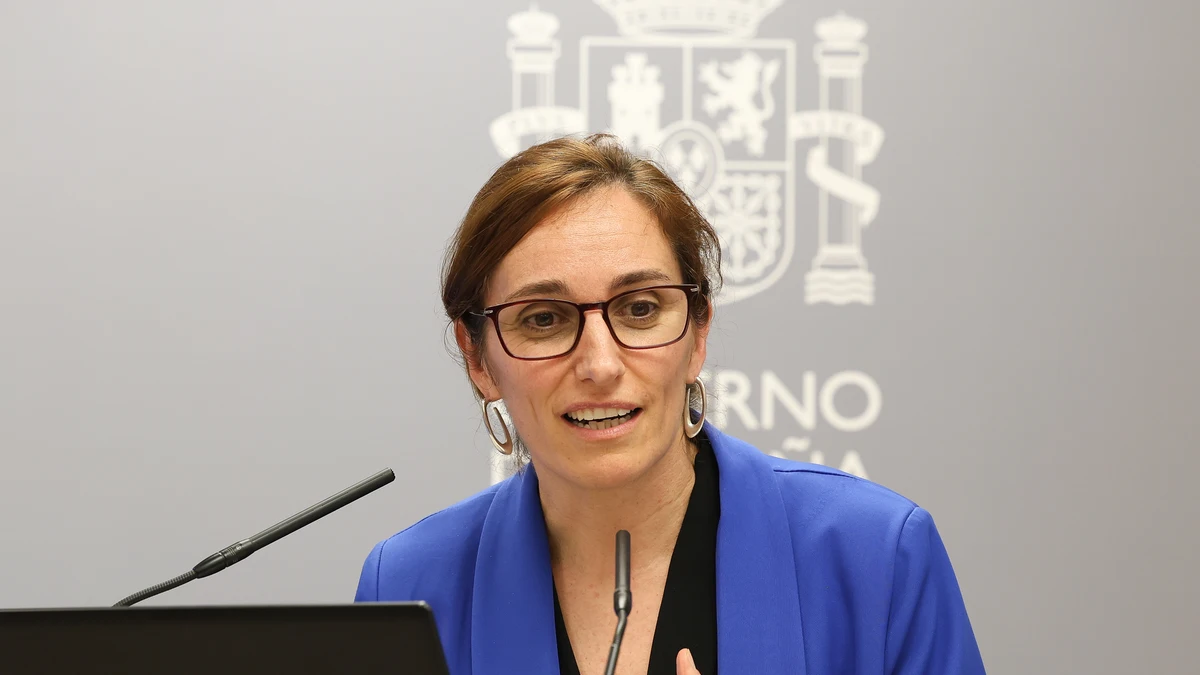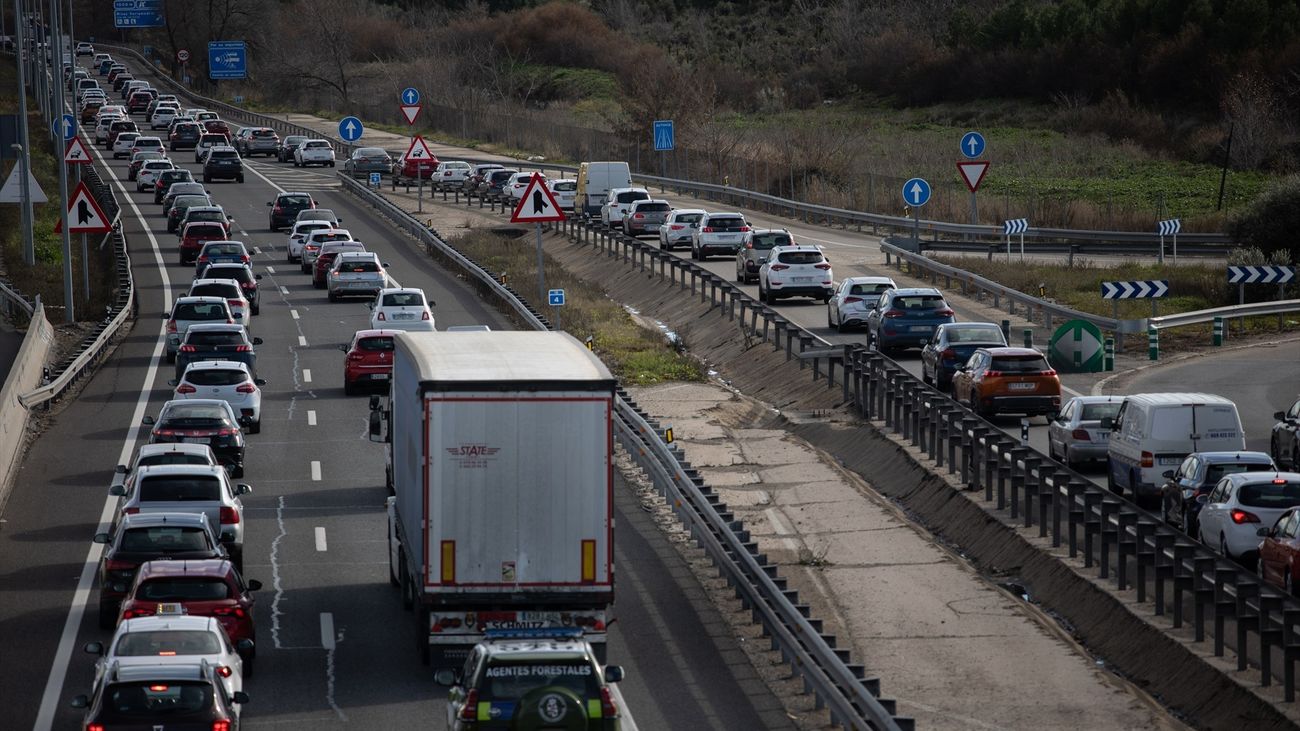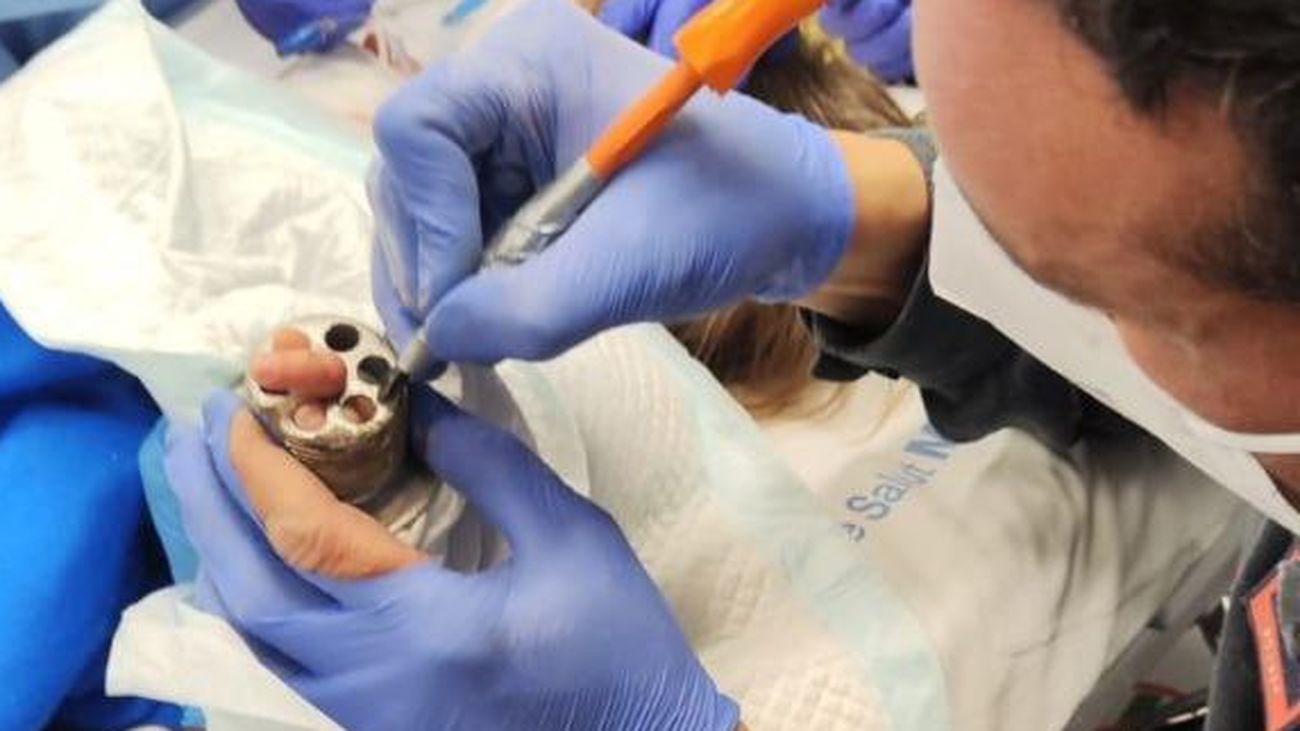Around with the Legion battalion that continues to carry Franco in his name

46 years have passed since the end of the Franco dictatorship and 15 since Spain began to have a historical memory law to eliminate the vestiges that still persist, but a unit of the Legion continues to carry Francisco Franco in his name. It is the I Flag 'Comandante Franco', of which the dictator became the first chief from the moment of its foundation, in 1920, and which belongs to the Third Great Captain, based in Melilla.
In the autonomous city there are a few legionnaires who serve in this battalion flagged by a shield that pays tribute to Franco. This was confirmed by the current Secretary of State for Defense and then Undersecretary, Amparo Valcarce, in the Congressional Defense Commission: "Indeed, it bears the name of Commander Franco —not Ramón, Francisco— because he was his first boss between 1920 and 1922", can be read in the meeting diary of October 22, 2020. Something that also consists in the Web page of the Army, where the origins of the Legion and the units that compose it are told.
At the time that Franco directed and fought with the first of the three flags that then made up what was originally called the Tercio de Extranjeros, he was already one of the closest collaborators of the fascist José Millán-Astray, the founder of the Legion by his own personal efforts. So much so that he even proposed to the dictator that, in addition to directing the flag, he be his lieutenant. Franco would later become head of the Tercio de Extranjeros, a task he held until 1935, shortly before carrying out the coup against the Second Republic, the failure of which would start the civil war. However, it would not be until 1994 when the I Flag was renamed 'Comandante Franco'.
The matter has been going around for some time: it had already been denounced and has jumped to the media and social networks on several occasions, but it has returned to the agenda after last March the Government responded to a parliamentary question from Bildu, one of the parties that have been drawing attention to this issue for some time, in which they asked the Executive if it was among their plans to withdraw the denomination.
"Is it true that the Ministry of Defense has decided to change the name of the Legion unit called I Bandera Comandante Franco?"; "When is this change going to take place?"; "What will the new denomination be?" asked deputy Jon Iñarritu. The reply succinctly refers to the fact that the Ministry of Defense "has carried out the necessary actions to comply with Law 52/2007 of December 26 [la conocida como Ley de Memoria Histórica]". And he adds: "On July 20, 2021, the Council of Ministers approved the Democratic Memory Bill, which includes new provisions." A very similar response was also received by Compromís in the Senate in July 2021 .
Valcarce spoke along the same lines in Congress a year and a half ago, when he assured that in 2009 and 2019 Defense "worked" on 410 Francoist symbols in addition to modifying "11 names of bases or barracks." The socialist explained that a commission within the General Subdirectorate of Historical Heritage had selected some symbols that had to be "excluded" from compliance with the law, but "it is not the case," she said in reference to the I Bandera 'Comandante Frank'. "Much has been done, continues to be done, and there is no doubt in your mind that we will continue to do so," she added before naming the Democratic Memory Law that the Council of Ministers would approve shortly after.
The ambiguity of the answers has not been clarified by the Ministry of Defense, which has not responded to questions from this medium about whether it plans to carry out the modification. For its part, the Ministry of the Presidency, Relations with the Courts and Democratic Memory assures that it is a matter of competence of the department directed by Margarita Robles. "It is obvious that in the 21st century it is nonsense that there is a unit named after a genocidal dictator who starred in one of the darkest episodes in our history. And for that there is legislation that tries to prevent this from happening," he says. Iñárritu, who will continue to insist on the issue if the battalion is not renamed.
For the deputy, the current legality "urges" the Government to carry out the modification, without the need to wait for the green light to be given to the Democratic Memory Law. A rule that, in fact, has been in the drawer for a long time and, for the moment, with no sign of being reactivated in the face of discrepancies between the PSOE and coalition partners such as ERC, who demand the modification of the 1977 Amnesty Law, and that they keep the norm frozen. The law reinforces the considerations related to the withdrawal of symbols that exalt the dictatorship, the Civil War, its leaders or repressive organizations, but it is something that is already contemplated in the first legislation, approved in 2007.
It is specifically its article 15 that obliges the Public Administrations to withdraw "shields, insignia, plaques and other objectives or commemorative mentions" that suppose an exaltation of Francoism. "With symbols we are referring not only to streets, but to honors and distinctions of all kinds," explains the lawyer specialized in historical memory Eduardo Ranz and whose legal actions forced the autonomous city of Melilla in 2017 to make an inventory of Francoist vestiges .
Among them was the statue of Franco, whose withdrawal was approved in February last year despite the abstention of the PP and the vote against Vox. What happened then with some sectors of the right and ultra organizations such as the Millán Astray Platform is a prelude to what could happen with the flag of the Legion. And it is that they have opposed the removal of the effigy and have resorted to the courts arguing that it did not extol the dictator, but the figure of Franco as commander for his years in the third and in the Rif war, where the Spanish troops They were known for their brutality and cruelty.
However, Eduardo Ranz assures that "everything that has to do with Franco is Francoist symbology", regardless of whether it was built to commemorate events prior to the Civil War. "Any symbology that represents him must be understood in this way and therefore is contrary to the Law of Historical Memory," concludes the lawyer.









